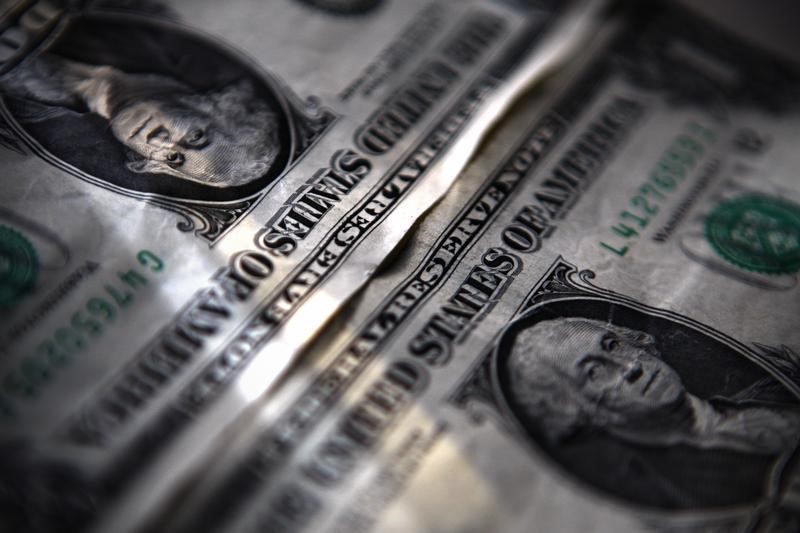Intel stock spikes after report of possible US government stake
Investing.com - The U.S. dollar posted small gains Tuesday, drifting ahead of the likely imposition of reciprocal tariffs by U.S. President Donald Trump later this week, while the euro weakened ahead of key inflation data.
At 03:05 ET (08:05 GMT), the Dollar Index, which tracks the greenback against a basket of six other currencies, traded 0.1% higher to 103.937.
JOLTS data due
The dollar has largely stalled in anticipation of President Trump’s unveiling of more trade tariffs potentially as early as this evening, but more likely on Wednesday - the day he has deemed "Liberation Day."
Trump has argued that the tariffs are necessary to correct imbalances between the U.S. and its foreign trade partners, as well as a tool to bring manufacturing jobs back to the country.
However, some economists have warned that the duties will refuel inflationary pressures and weigh on growth, leading to a period of so-called "stagflation."
“The dollar has plenty of room to rally should tomorrow’s tariff announcement surprise on the hawkish (risk-negative) side, but remains at risk of data-led downside pressure,” said analysts at ING, in a note.
There are also an abundance of important U.S. economic data indicators due this week, starting later in the session with the February reading of a measure of job openings, which will be the first of a string of labor market data that will culminate with the all-important nonfarm payrolls report on Friday.
The Job Openings and Labor Turnover Survey, or JOLTS report, is seen coming in at 7.690 million on the last day of February, compared with 7.740 million in the previous month.
“The U.S. macro calendar will have a big say on today’s FX moves, but if we don’t see any data surprise we would not fight the dollar’s tentative recovery,” ING added.
Eurozone CPI in spotlight
In Europe, EUR/USD traded 0.1% lower to 1.0801, ahead of the release of key economic data, including March consumer prices.
The eurozone CPI index is expected to fall to 2.2% in March on an annual basis, from 2.3% the prior month, but a surprise to the downside is possible given German inflation fell more than expected in March.
The ECB has cut interest rates six times since June, but has provided few signals about its next move since the most recent reduction of its key deposit rate to 2.5% at the March meeting.
“We remain generally cautious about following any EUR/USD rally into the tariff event and instead see mostly downside risks, barring any meaningful US data surprise,” said ING.
“We still think a move to 1.070-1.073 can be on the cards in the coming days if the US goes ahead with an aggressive tariff plan.”
GBP/USD traded 0.1% lower to 1.2908, with sterling traders anxiously awaiting news about the trade tariffs after Prime Minister Keir Starmer and Trump had "productive negotiations" towards a trade deal in a phone call over the weekend.
Safe-haven yen gains
In Asia, USD/JPY traded 0.3% lower to 149.61, with the safe-haven Japanese yen helped by data showing a mild, unexpected improvement in Japan’s unemployment rate.
The yen rose nearly 5% against the dollar in the January-March period on growing bets that the Bank of Japan would hike interest rates again.
USD/CNY edged 0.2% higher to 7.2681, even as private purchasing managers index data showed better-than-expected growth in the manufacturing sector, mirroring a government reading from Monday.
China is set to be a major target of Trump’s tariffs.
AUD/USD rose 0.1% to 0.6248, trimming early gains after the RBA kept interest rates steady at 4.1%.
The central bank flagged heightened uncertainty over the Australian and global economy, especially in the face of increased U.S. trade tariffs.
